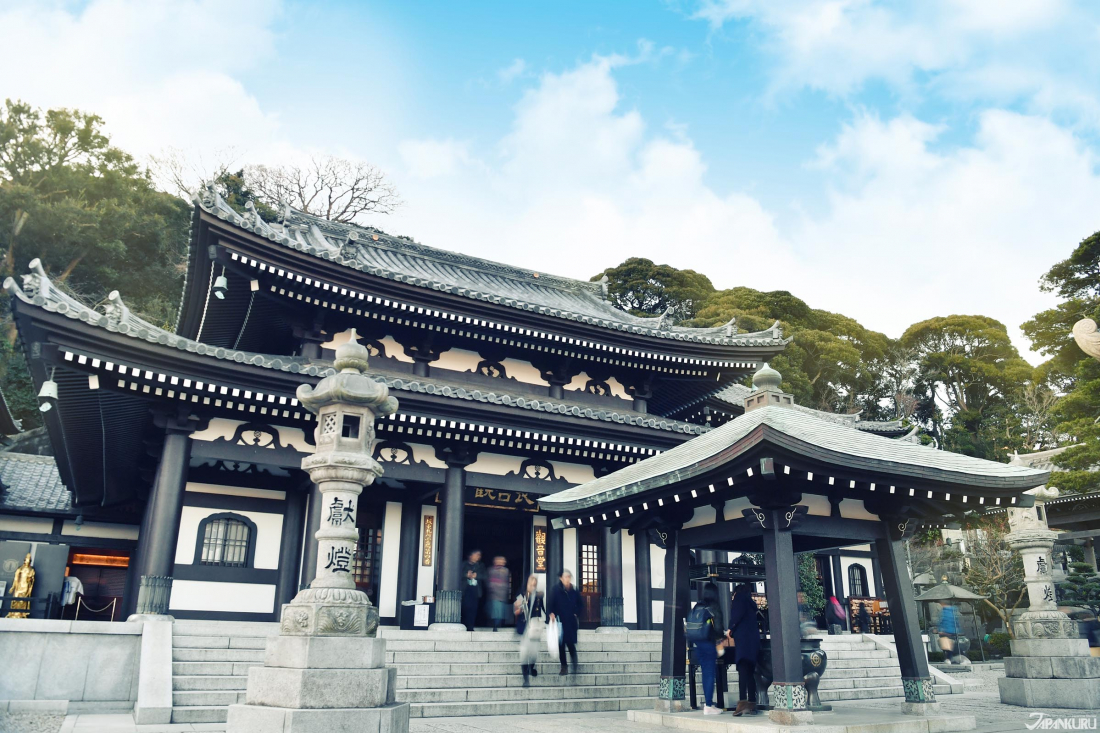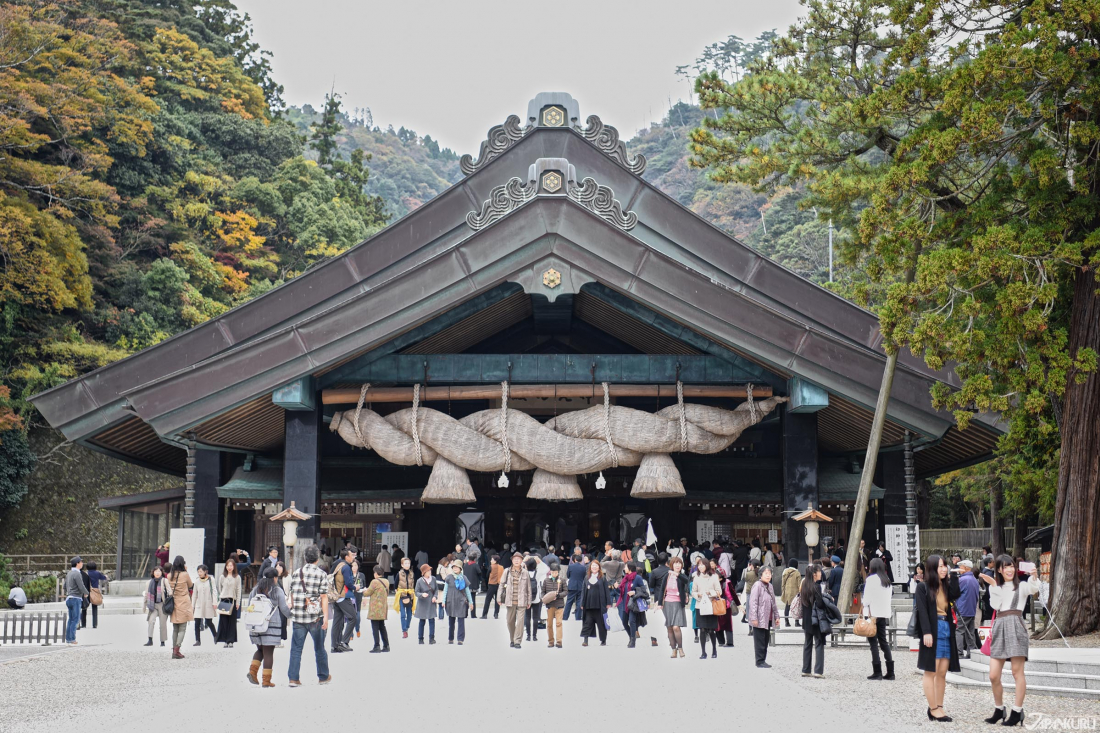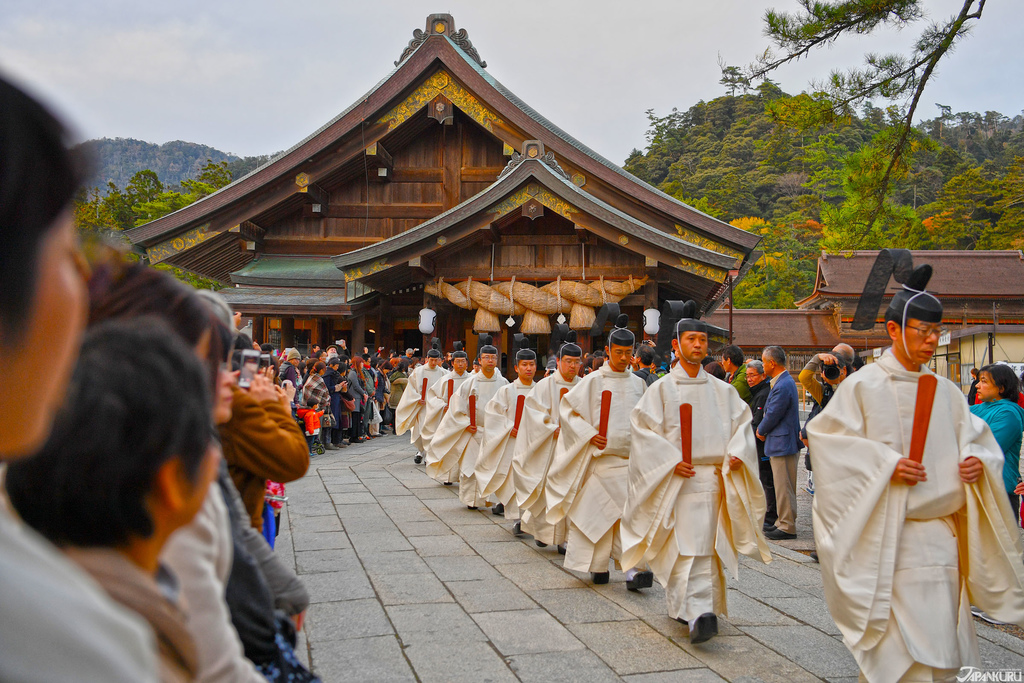CONTENTS
Parlons Temples & Sanctuaires
Quand on arrive pour la première fois au Japon, on se retrouve souvent à contempler les temples et sanctuaires au fil du voyage. Cependant il est souvent assez diffiicile de comprendre les différences entre les deux et de saisir les ficelles pour les reconnaître.
Aujourd'hui laissez-nous donc vous présenter en détails comment le Japon a su se développer autours de deux religions complètement différentes. Si l'on parle de religion, nous faisons bien évidemment référence au :
・Shintoïsme, religion d'Etat après la Restauration Meiji de 1868
・Bouddhisme, religion introduite au Japon depuis la Chine au Vème siècle
Différences entre Temples & Sanctuaires
Si vous ne souhaitez pas rentrer dans les détails et retenir seulement une chose dites-vous que : Sanctuaire → Shintoisme et Temple → Bouddhisme
Pour notre part, nous souhaitions aborder le sujet plus en profondeur c'est pourquoi nous verrons les différences qui opposent Sanctuaire et Temple ainsi que les différentes pratiques religieuses que vous pourrez trouver dans ces différents lieux.
Sanctuaire et Shintoïsme
Le Shintoïsme mélange croyances historiques et mythologie. C’est aujourd’hui la première religion pratiquée au Japon. Mais alors quelles sont ses caractéristiques :
・Polythéisme : on vénère une multitude de ‘Kami’ (神, dieux)
・Ethymologie : suffixes ‘Jinja’ (神社), ‘Jingu’ (神宮) ou ‘Taisha’ (大社)
・Architecture : vous retrouverez un ‘Torii’ (鳥居) à l’entrée
・Purification : on se purifie via une fontaine appelée ‘Chozuya’ (手水舎)
・Prière : elle est codifiée ; on s’incline 2 fois → on frappe 2 fois dans ses mains → prie → on s’incline une dernière fois pour clore la prière.
Les sanctuaires sont présents à travers le Japon et souvent représentés sous une hierarchie ; Sanctuaire principale → Sanctuaires sanctuaires présents dans tout le pays.
null
Le Bouddhisme a été importé de Chine puis adapté au Japon. Il s’est alors développé dans le pays à travers différents courant. Voyons-voir ses caractéristiques :
・Monothéisme : on ne vénère qu’un Dieu et il s’agit de Bouddha.
・Ethymologie : suffixes ‘Tera/Ji’ (寺), ou 'In' (院)
・Architecture : vous retrouverez un ‘Mon’ (門) porte plus imposante
・Purification : on se purifie par la fumée issue du bruleur à encens
・Prière : elle est bien plus calme que dans le shintoïsme ; ici on joint simplement ses mains.
Il y a une bonne dizaine de statues de Bouddha à travers le Japon mais les trois plus représentatives sont celui de Nara au Todai-ji (東大寺), celui de Kamakura au Kotoku-in (高徳院) et celui de Kyoto au Hoko-ji (方広寺).
Lors de nos différents tournages et shooting à travers le Japon nous avons eu l'occasion de visiter une bonne centaine de Temples et Sanctuaires. Pour vous faire une petite idée de ceux qu'il serait intéressant de visiter, nous vous avons concocté une sélection des Temples et Sanctuaires incontournables!
3 Sanctuaires à travers le Japon
L'Izumo Taisha (出雲大社) est clairement l'un des sanctuaires les plus reconnus du Japon. On le place souvent à côté d'Ise Jingu (伊勢神宮) situé dans la préfecture de Mie. Izumo se trouve quant à lui dans la préfecture de Shimane au Nord d'Hiroshima.
Il est reconnu comme l'un des plus anciens sanctuaires et aussi comme un lieu où l'on vient faire ses voeux d'amour. Au vue de son ampleur, il a été reconnu comme Trésor National!
Izumo Taisha (出雲大社)
195 Taishacho Kizukihigashi, Izumo, Préfecture de Shimane 699-0701 Google Maps

Torii imposant du sanctuaire!
Cérémonie d’Izumo Taisha
Pourquoi ne pas accrocher un Ema?!
Le Sanctuaire Toshogu (東照宮), se trouvant dans la préfecture de Tochigi, à quelques encablures de Tokyo est considéré comme le dernier lieu de résidence de la figure emblématique Tokugawa Ieyasa, le principal fondateur du règne shogunat sur le Japon pendant plus de deux siècles.
Aujourd'hui il est considéré comme le sanctuaire présentant les artifices et décorations les plus impressionnantes du Japon. Si vous êtes à Tokyo, vous ne voudriez pas passer à côté.
Sanctuaire Toshogu (東照宮)
2301 Sannai, Nikko, Préfecture de Tochigi 321-1431 Google Maps

Une ballade en pleine Nature
Pagode à cinq étages
Les fameux singes du lieu!
Le Fushimi Inari Taisha (伏見稲荷大社) est un complexe de sanctuaires se trouvant dans la banlieue sud de Kyoto. Vous avez déjà dû voir ses nombreux 'Torii' qui forme un long tunnel vers le sommet de la montagne. Il est le représentant principal des sanctuaires Inari dispersés à travers le Japon.
Il vous faudra environ 2 à 3 heures pour atteindre son sommet mais vous ne voudriez pas manquer cette jolie vue sur la ville de Kyoto. Si vous souhaitez éviter la foule, nous vous conseillons de venir le matin!
Fushimi Inari Taisha (伏見稲荷大社)
612-0882 Préfecture de Kyoto, Kyoto, Fushimi-ku, Fukakusa Yabunouchicho Google Maps

Le kitsune, emblème d’Inari
Tunnel de Torii
Partez à la découverte!
3 Temples à travers le Japon
Le Kiyomizudera (清水寺), est le temple représentant la ville de Kyoto. Erigé en 780 il a longtemps accueilli l'une des plus anciennes formes de bouddhisme au Japon. Aujourd'hui il est surtout un lieu apprécié lors de la floraison des cerisiers au Printemps mais aussi pendant le changement de le couleur des arbres en période automnale. Nous n'avons pas eu encore la chance de le visiter durant cette période alors nous espérons pouvoir y passer l'année prochaine!
Kiyomizudera (清水寺)
294 Kiyomizu 1-chome, Higashiyama, Kyoto, Préfecture de Kyoto 605-0862 Google Maps

Des rues somptueuses
Tentez d’enfiler un kimono!
Arrière rue presque vide
Si vous demander une seule adresse de temple à Tokyo, tout le monde vous répondrait : Senso-ji (浅草寺)! Pas étonnant il s'agit du plus important temple de la capitale et est aujourd'hui un lieu visité par plus de 14 millions de personnes par an. Vous ne serez donc pas surpris d'y voir beaucoup de monde!
Il y a peu nous avons eu la chance de le photographier sur la neige, un spectacle encore plus impressionant!
Senso-ji (浅草寺)
2 Chome-3-1 Asakusa, Taitō, Tokyo 111-0032 Google Maps

La Kaminarimon (雷門)
Tout un tas de boutiques vous attendent!
Goûtez donc au melon pan!
Le Yamadera (山寺) est un temple situé dans la préfecture de Yamagata, il a été fondé durant l'Epoque Heian par l'un des moines les plus reconnus de l'époque : Jikaku Daishi.
L'ambiance du lieu est juste fantastique puisque vous devrez grimper pendant une petite heure pour profiter des paysages. De quoi se ressourcer en pleine Nature!
Yamadera (山寺)
999-3301 Préfecture de Yamagata, Yamagata, Yamadera, 4456−1 Google Maps

Respirez l’air frais des montagnes
Quelques minutes de marche…
… pour apprécier cette vue!
C'est tout pour nous aujourd'hui! Nous espérons que vous avez apprécié les quelques annecdotes et que vous saurez maintenant reconnaître un temple d'un sanctuaire! Peut-être que les lieux que nous vous avons présentés sont déjà sur votre liste de voyage alors n'hésitez à partager avec nous vos annecdotes de voyages!
Restez connectés pour de nouveaux articles originaux tous les jours sur JAPANKURU
N'hésitez pas à nous suivre également sur nos réseaux Facebook et Instagram pour plus d'histoires japonaises!
COMMENT
FEATURED MEDIA
VIEW MOREMAP OF JAPAN
SEARCH BY REGION

LATEST
VIEW MOREEVENT CALENDAR
VIEW MOREMOST POPULAR
 Tokyo Winter Recommendation: Don’t Miss Tokyo Mega Illumination, Japan’s #1 Light Show
Tokyo Winter Recommendation: Don’t Miss Tokyo Mega Illumination, Japan’s #1 Light Show ป้ายยาสินค้าน่าซื้อในร้านขายยาญี่ปุ่น | KOWA ผลิตภัณฑ์เพื่อสุขภาพสำหรับคนยุคใหม่
ป้ายยาสินค้าน่าซื้อในร้านขายยาญี่ปุ่น | KOWA ผลิตภัณฑ์เพื่อสุขภาพสำหรับคนยุคใหม่ Okinawa Family Road Trip: Japanese Glasses Shopping at San-A Urasoe West Coast PARCO CITY, Discount Coupons, & Okinawa Sightseeing with JINS
Okinawa Family Road Trip: Japanese Glasses Shopping at San-A Urasoe West Coast PARCO CITY, Discount Coupons, & Okinawa Sightseeing with JINS







































 >> Find out more at Japankuru.com! (link in bio)
#
>> Find out more at Japankuru.com! (link in bio)
#





 The Robot Restaurant is gone, but the Samurai Restaurant is here to take its place. Check it out, and don't forget your coupon!
The Robot Restaurant is gone, but the Samurai Restaurant is here to take its place. Check it out, and don't forget your coupon!
 신주쿠의 명소 로봇 레스토랑이 사무라이 레스토랑으로 부활! 절찬 쿠폰 발급중
신주쿠의 명소 로봇 레스토랑이 사무라이 레스토랑으로 부활! 절찬 쿠폰 발급중
 18歲以上才能入場的歌舞秀,和你想的不一樣!拿好優惠券去看看~
#tokyo #shinjuku #samurairestaurant #robotrestaurant #tokyotrip #도쿄여행 #신주쿠 #사무라이레스토랑 #이색체험 #할인이벤트 #歌舞伎町 #東京景點 #武士餐廳 #日本表演 #日本文化體驗 #japankuru #japantrip #japantravel #japanlovers #japan_of_insta
18歲以上才能入場的歌舞秀,和你想的不一樣!拿好優惠券去看看~
#tokyo #shinjuku #samurairestaurant #robotrestaurant #tokyotrip #도쿄여행 #신주쿠 #사무라이레스토랑 #이색체험 #할인이벤트 #歌舞伎町 #東京景點 #武士餐廳 #日本表演 #日本文化體驗 #japankuru #japantrip #japantravel #japanlovers #japan_of_insta
 코지마 x 빅 카메라 쿠폰으로 일본 가전 제품 쇼핑하기
#pr #japankuru #japanshopping #kojima #biccamera #japaneseskincare #yaman #dji #osmopocket3 #skincaredevice #日本購物 #美容儀 #相機 #雅萌 #日本家電 #일본여행 #면세 #여행꿀팁 #일본쇼핑리스트 #쿠폰 #일본쇼핑 #일본브랜드 #할인 #코지마 #빅카메라 #japankurucoupon
코지마 x 빅 카메라 쿠폰으로 일본 가전 제품 쇼핑하기
#pr #japankuru #japanshopping #kojima #biccamera #japaneseskincare #yaman #dji #osmopocket3 #skincaredevice #日本購物 #美容儀 #相機 #雅萌 #日本家電 #일본여행 #면세 #여행꿀팁 #일본쇼핑리스트 #쿠폰 #일본쇼핑 #일본브랜드 #할인 #코지마 #빅카메라 #japankurucoupon











































